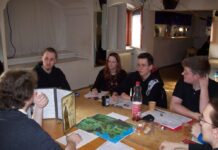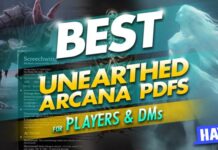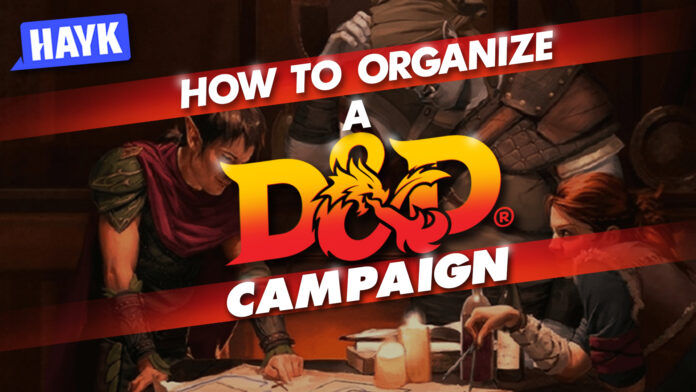
Organizing a D&D campaign can be difficult if you don’t know where to start. Before you start recruiting players, you must have a refined idea and a detailed campaign outline. If you’re prepared, you can make adjustments in your campaign easily.
In this article, we’ll cover the fundamentals needed to organize a D&D campaign. Aside from the fundamentals, you’ll also learn about some of the most popular D&D books that can help your campaign grow.
Contents of this Page
Organizing A D&D Campaign – The Right Way
Build Your Idea
Every D&D campaign starts with a small idea. This idea can come from your dreams, reference materials, personal stories, and experiences. You can start building your idea by formulating a powerful sentence that encapsulates the focus of your campaign.
Here are some sentences to kick off your campaign idea:
• A story about the classic duel between good and evil
• The society has fallen, and non-heroes must strive to survive
• A terrifying beast ravages the land and must be stopped
• Politics are destroying the world, and only the cunning will prevail
• Gods intend to measure a small group of adventurers through difficult trials
• Zombies have risen – modern-day heroes must stop them
• A mad king from the neighboring country is ready to wage war
Aside from building your idea from scratch, you can gather existing ideas and refine them to your liking. Recycling ideas or plot lines is a perfectly valid D&D method, and it can even help you save precious time.
Frame Your Idea to A Campaign Theme
After preparing your major campaign idea, you should frame it into a guiding theme. The theme will determine the flavor of your campaign, and it will help set players’ expectations during the Session Zero.
It’s easy to pick a campaign theme. You can go for the traditional high fantasy for nearly limitless applications of magic or psychological horror for a terrifying effect.
Themes can also refine your current campaign idea. Perhaps a classic ‘villain story’ set in a cyberpunk theme will create a lasting impact. How about a combat-focused campaign set in a whimsical holiday theme? Try to experiment with numerous themes to come up with a memorable campaign!
Know Your WHY as A DM
Asking yourself why you DM is an important part of the journey. Not all DMs have the same reasons for organizing a game. Some DMs want the total sense of control, while others just want to have fun with their friends. If you can pinpoint your reason for DMing, the process of organizing a D&D campaign will become easier.
It’s easy to find inspiration from modern D&D materials. You can read popular entries in RPG forums. Official published materials are also excellent sources. Tales from the Yawning Portal is a great example because it contains detailed yet compact adventures for beginners and veteran players.
Create Your Campaign Outline
A campaign outline is more than just a guide on how your plot will go from start to bottom. Think of the outline as a springboard that will allow you to put all campaign pieces effectively.
There are several ways to make a campaign outline. The easiest method is to follow the storytelling format where the Beginning, Middle, and End phases are clear. Even if your players are free to make their own decisions regarding the story, they will always arrive at the end one way or another. Another method is the ‘story tree’ creation. The tree represents your primary campaign theme, while branches can represent side quests or mini-stories. Making a story tree will take more time, but it offers greater flexibility in campaign creation.
You don’t need anything fancy to make a campaign outline. An online text document or a page from your notebook will do. Just make sure that your players cannot access your secret campaign document!
Envision the Types of Players You Want
Many DMs don’t know how to find the right players for their games. Well, the process of finding players is not easy to begin with. As a DM, you need to sift through the most common player attitudes and playing styles. You mustn’t go to the recruitment boards blindly.
Don’t rush the recruitment process. Try to envision the player types that might fit your game. Do you want to avoid min-maxers and rules lawyers? Or perhaps your campaign is best geared for total beginners? If you’re a beginner DM, don’t hesitate to ask for recruitment tips from veteran DMs.
Start Recruiting Players
Player recruitment is an unavoidable part of your DMing journey. The process can also be as tedious as scheduling but there are always some nifty solutions.
One useful solution that you can do is to prepare a spec sheet for players. This spec sheet must contain the qualities of the players that you want for your campaign.
These are the best things to include in your spec sheet:
• Software or tool specifications
• Player knowledge (beginner, intermediate, pro)
• Availability periods
• Campaign themes and concepts
• Allowed races, classes, and character options
• Starting level
• Game medium (voice, physical, play-by-post, video)
A campaign spec sheet doesn’t need to be long. Players must be able to scan the sheet in less than a minute. Also, make sure that your spec sheet is always available in different platforms. You can always put your sheet in a free blog post or a Facebook note.
Social media recruitment is also a fast way to reach out to players. Lots of players typically wait in Facebook groups and pages, and most of them are eager to join games immediately. If you can turn your spec sheet into a creative recruitment post, you will soon gather the attention of many players.
Gather Your Tools and Materials
Once you’ve recruited the right group of players, you should do a quick inventory check. Make sure that you have the tools and materials needed for a D&D game. A physical D&D session requires – at the very least – a set of gaming die, battlemaps, DM screen, and the official rulebooks.
If your campaign is online, you don’t need too many materials to run the game. The important thing is that you have a handy tool that lets you communicate with other players.
And don’t forget about these optional yet very important materials:
• Custom tokens
• Audio (background music and extra sound files)
• Digital assets (high-res pictures, cutouts, custom art)
• VTT (virtual tabletop software)
• A note-taking tool
• D&D session markers
• Third-party sourcebooks
Having a dedicated folder for D&D materials will help you save time. Just open your D&D folder and get the material that you need!
Coordinate with RPG Communities
The wise DM knows how to utilize all avenues of the hobby to enrich his or her game. With the help of the Internet, you can now explore these avenues and reach out to all tabletop RPG enthusiasts.
RPG.net is one of the oldest communities that you can visit. This website contains hundreds of forum posts related to RPG, tabletop gaming, character builds, DMing tips, and adventure reviews. You can also find D&D recruitment boards in the website. It only takes a few minutes to create an account, and there are also no strict forum limitations.
Next to RPG.net is the popular Enworld, also known as Morris’ Unofficial Tabletop RPG News. Like RPG.net, Enworld has tabletop forums and recruitment boards. However, Enworld has comprehensive reviews of new published materials and playtest sessions. Kickstarters are also often linked in Enworld, allowing DMs to bolster their collections in just a few cl
If you’re looking for exclusive content related to D&D 5E, you should check out D&D Beyond forums. D&D Beyond is the official community platform for 5E, and it contains free products, recruitment boards, character sheets, libraries (spell and items), bestiary, and an encounter building tool for DMs. Additionally, D&D Beyond has an extensive mobile support.
Discord servers are also excellent communities that you can explore. Simply join a Discord server for D&D, follow the rules, and start making new friends!
Best Books to Help You Make A Thriving D&D Campaign
Do you want to start collecting D&D books? There are hundreds of books to choose from, but you shouldn’t miss these books that we’ve reviewed!
D&D Dungeon Master’s Guide
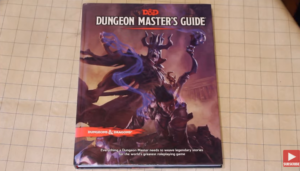
Publisher: Wizards of the Coast
Language: English
Item Weight: 2.44 Pounds
Pages: 320
Book Type: Core Rulebook
Rating: 4.5/5
The Dungeon Master’s Guide (DMG) is a must-have book for all aspiring DMs. Whether you’re a beginner or an experienced DM, you can always learn a thing or two from D&D 5E’s official Dungeon Master’s Guide.
The DMG overhauled a huge portion of the D&D official lore. Many sections were improved, particularly racial options and information about the planes. If you’re a DM from older D&D editions, you might notice some of the inconsistencies here and there. But don’t worry – the Dungeon Master’s Guide has simplified a lot of things to help you run a campaign as fast as possible. The DMG’s artwork is also beautiful, evoking the high magic fantasy essence of D&D.
One small problem with the book is its irregular formatting. Some sections are small, as if clinched by the surrounding art. The magic item descriptions are also wordy, and they lack the appropriate art for visualization.
D&D 5E Monster Manual
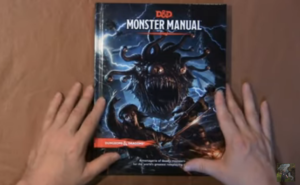
Publisher: Wizards of the Coast
Language: English
Item Weight: 2 Pounds
Pages: 352
Book Type: Core Rulebook
Rating: 4/5
The most popular 5E bestiary is the Monster Manual (MM). This handy book contains detailed monster information, classic art, and interesting lore about monster habitats. The information presented in the Monster Manual is more than enough to inspire DMs on making a fleshed-out campaign.
Every monster in the Monster Manual is cleverly detailed in terms of lore. You can read the lore entry of each monster and modify its behavior along the way. The stat blocks are also easy to understand, and they contain the monsters’ typical actions.
Not all monsters in the Monster Manual are interesting or challenging. The dragons are still deadly but they can benefit from additional actions or feats – just like their counterparts from D&D 3.5E and 4E. On the positive side, the simple monsters in MM are truly challenging for newbies and mid-level characters.
If you’re keen on using monsters from the Monster Manual, prepare for a serious bout of consistent page-turning. The monsters are organized alphabetically, and you have to wade through stat blocks, lore information, and tons of art. To solve this simple problem, you can use bookmarks. Alternately, you can also try getting a digital copy of the Monster Manual for easy reference.
D&D Player’s Handbook
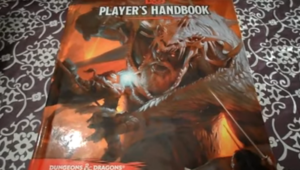
Publisher: Wizards of the Coast
Language: English
Item Weight: 1 Pound
Pages: 320
Book Type: Core Rulebook
Rating: 4.5/5
The Player’s Handbook (PHB) is the most important 5E Core Rulebook that every DM or player must have. This book contains D&D 5E’s mechanical rules related to combat, adventuring, character management, and spellcasting.
From character creation to higher tiers of gameplay, there’s no shortage of information in the PHB. Beginners can even utilize the quick character creation guide presented in the early pages of the book. The information on classes and races are also properly organized for beginners and pros alike. Plus, the spell lists for casting classes are detailed and arranged alphabetically. The spell descriptions are fun to read and visualize.
Improper formatting is one of the drawbacks of the PHB. Some chapters have irregular text portions, resulting into awkward cutaways. The formatting issue is even worst with digital PHB copies, but they allow normal bookmarking at the very least.
The PHB’s artwork is decent but far inferior to the DMG and MM. You won’t be looking at the artwork anyway, especially if you’re eager to understand a confusing rule with the help of the PHB’s wisdom.
Fizban’s Treasury of Dragons
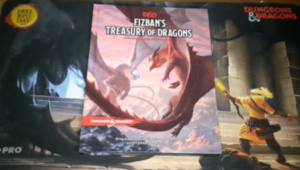
Publisher: Wizards of the Coast
Language: English
Item Weight: 1.25 Pounds
Pages: 224
Book Type: Supplement
Rating: 4/5
Fizban’s Treasury of Dragons (FTD) is an intricate book about dragons and draconic lore. Within the book, you can find new monsters and additional character options to use. FTD is also a supplementary book related to Dragonlance – a popular campaign setting that eventually produced numerous novels and short stories.
The dragons of FTD are great for any 5E one-shot adventure or campaign because of their actions and threat level. If you’re an experienced DM, you might consider adding custom monster options to bump a dragon’s threat. Players with Dragonborn characters will also benefit from the class options included in FTD.
One noticeable issue of Fizban’s Treasury of Dragons is the fragile binding. Turning the book a few times will wear out the creases faster than the official D&D published materials. Also, FTD doesn’t contain enough information about the Dragonlance setting. Dragonlance’s world, Krynn, wasn’t explored much by the book. So, if you’re a Dragonlance fan expecting for Krynn-related content, you might feel a bit disappointed. Still, FTD is a valuable book that can improve your growing D&D collection!
Creature Codex
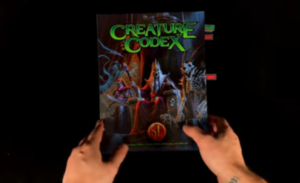
Publisher: Kobold Press
Language: English
Item Weight: 1 Pound
Pages: 424
Book Type: Supplement
Rating: 4.5/5
If you’re looking for additional exciting monsters to improve your campaign, you should check out Creature Codex. This thick bestiary contains a plethora of wonderful and terrifying monsters that can surprise any player. The Creature Codex is also compatible with the content of the 5E Monster Manual.
The Creature Codex is filled with detailed lore about numerous monsters. Each monster has an intricate origin story that can determine or justify its combat actions. The monster actions are also tricky to deal with because of their inherent damage and mechanics.
One minor issue with the Creature Codex is its unique aesthetic. The Creature Codex doesn’t have the 5E aesthetic appeal, except for the stat block format of each monster. Also, the book doesn’t have glossy pages unlike other published materials.
Xanathar’s Guide to Everything
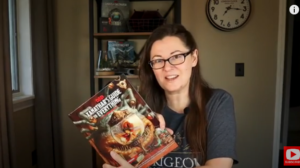
Publisher: Wizards of the Coast
Language: English
Item Weight: 1 Pound
Pages: 192
Book Type: Supplement
Rating: 4.5/5
One of the best supplements that were ever published for 5E is Xanathar’s Guide to Everything (XGE). This book contains dozens of new character options that can spice up gameplay. DMs can also get additional materials and content from XGE.
Xanathar’s Guide to Everything has tons of options for the dedicated player. Aside from subclasses, XGE contains racial feats designed to complement any character build. You can also check out the new powerful spells listed in the book.
Just like most supplementary materials, Xanathar’s Guide to Everything has filler sections. While these filler sections are somehow annoying, they won’t affect your enjoyment of the book. Plus, XGE has fragile bindings and loose pages. If you’re always on the go, make sure that you have a sturdy case for XGE and other important books.
Tasha’s Cauldron of Everything
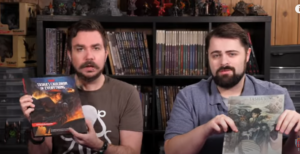
Publisher: Wizards of the Coast
Language: English
Item Weight: 1 Pound
Pages: 192
Book Type: Supplement
Rating: 4/5
Tasha’s Cauldron of Everything (TCE) is a controversial supplementary book that divided many DMs and players in D&D 5E. Some players believe that the additional options are not too enticing, while others feel that the new options improved the quality of their games.
If you’re running a highly flexible campaign, you can benefit from Tasha’s Cauldron of Everything. This book has tons of functional and aesthetic rewards that can be offered to your players. From customizable magic tattoos to strange magic items, the options are diverse. TCE also offers new ways to make an encounter more challenging through environmental hazards, negotiations, and new puzzles.
Even though TCE covered a lot of interesting things, the book still feels incomplete. Subclasses and feats are somehow mechanically weak, and the spells feel untested. To make matters worse, TCE’s pages are fragile. They can be torn apart easily and the bindings are not secured. Just be careful in opening the book to avoid long-term damage.
Dungeon of the Mad Mage
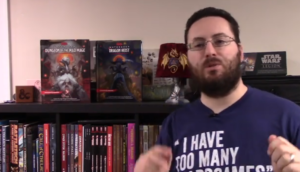
Publisher: Wizards of the Coast
Language: English
Item Weight: 1 Pound
Pages: 256
Book Type: Adventure Book
Rating: 4.5/5
The Dungeon of the Mad Mage (DOTMM) is an adventure book and a supplement rolled into one. Every floor of the book’s Mega-Dungeon has a self-contained story with a complete set of antagonists and minions. If you need an idea for a one-shot, you can even open the book and pluck one chapter out of it. Just change some of the details and you’d have an entirely new adventure for an excited group of players!
DOTMM’s big baddie also makes the whole adventure more interesting. Depending on your style, you can run the Mad Mage as an immortal idiot. Or perhaps you can turn the Mad Mage into a potential ally against an extradimensional threat. The Mad Mage’s stat block is also loaded with deadly surprises that will make the final encounter truly memorable!
DOTMM is surprisingly massive, and this counts as an advantage and a disadvantage. Since the adventure is big, the encounters might feel like a drag. Most players don’t like dungeon crawls, so you have to improvise and let them explore the city of Waterdeep. This can lead to potential session delays and long downtimes. To solve this problem, you must create strong plot points that will motivate the players to explore the deepest floors of the Undermountain (the Mega-Dungeon).
FAQ
Is it difficult to organize a D&D campaign?
Answer: It depends on your experience as a DM. If you’re a beginner DM, building an entire campaign from scratch will feel difficult. As you gain experience, you will feel more at ease with the process despite the challenges that you might encounter.
Do I need to be an experienced DM to run a campaign?
Answer: You don’t need to be an experienced DM to run a campaign or a one-shot. Nowadays, most published campaigns will offer some pieces of advice regarding DMing.
How many players do I need in a table?
Answer: There’s no hard limit for any players in a table. However, a range of 2-4 players is always a comfortable choice for most DMs. With that range, the DM can pay attention to all players’ needs effectively.
What’s a VTT? Do I need it in my game?
Answer: A VTT simply means Virtual Tabletop Software. This application simulates a physical D&D table and is commonly used in online sessions. The most popular VTT is Roll20.
Do restaurant owners allow D&D gaming in their place?
Answer: Not all restaurant owners allow D&D sessions, but some do. You can find these restaurants by asking local game stores or searching in RPG forums.
What should be the starting level allowed for my players?
Answer: The starting level, regardless of the dungeon, depends on the type of campaign that you intend to run. Meat grinders (combat-focused campaigns) should have at least Level 3 players to ensure safety and balance in encounters.
Is it okay to use many homebrew rules in a campaign?
Answer: There’s no limit in the number of homebrew rules that DMs can use. However, DMs should only use less than five rules for better campaign coherence and pacing. Also, having less rules in a campaign means that players won’t get too confused during the game.
Conclusion
Anyone can organize a D&D campaign as long as they understand the fundamentals. As much as possible, do not rush the process. Envision your story and try to see most of the possibilities before you even start scheduling the first game session. Once your campaign has already started, be prepared for anything that might happen!
What’s your personal method of preparing a campaign? Let us know in the comments below!


